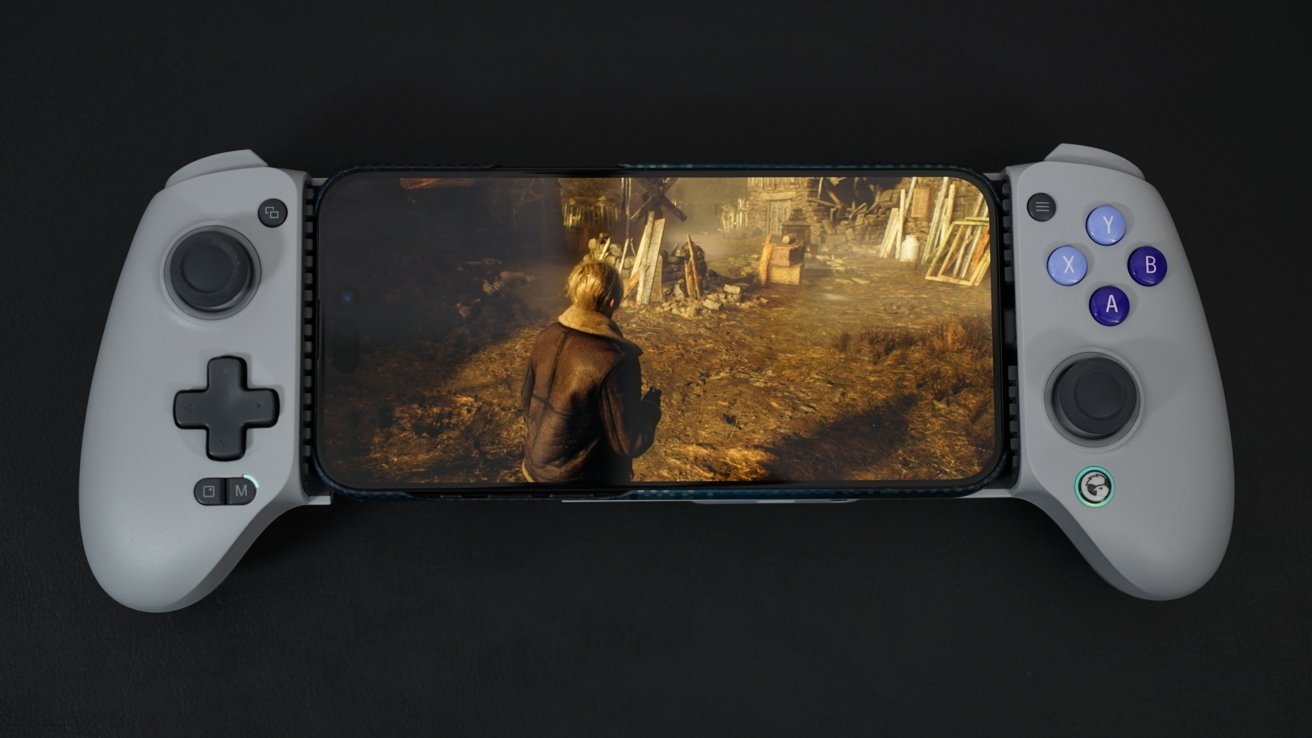Apple is finally allowing emulators in the App Store. Here are some of the best wrap-around controllers for your iPhone that lets you play them on the go.
On April 5, Apple updated its App Store rules to reverse a policy that prohibited emulators from being distributed within the storefront. The policy meant gamers who wanted to use emulators had to use other ways to be able to play the older games on the iPhone or iPad.
With the change, the App Store will probably gain a collection of emulators over time. However, avid gamers wanting to enjoy the retro titles will not be too pleased about gaming on a touchscreen.
Thankfully, there are many game controllers available on the market that introduce key control elements like joysticks and buttons. These are elements that have become commonplace in console gaming for quite a few years.
While they were made to give gamers a way to enjoy console-like control of their gameplay, the features of the controllers will almost certainly be welcomed by retro enthusiasts wanting to improve their own experience.
There are three general formats of game controller: A separate controller that needs you to prop up your iPhone to play, one that includes an attachment to place your iPhone above the controller, and a controller that separates into two sections that you then slip the iPhone inside. This last category is arguably the best for portable gaming.
What follows is a collection of game controllers that you can slot your iPhone into, allowing you to play your favorite titles while on the move. We’ve talked about the best controllers before — and we’ll be revisiting that soon enough.
Backbone One
Now on its second generation, the Backbone One is a prime example of a game controller for the iPhone. It’s also one that offers a combined hardware and software experience, once you slide your iPhone between the two sections.
The controller has dual analog sticks as well as a D-Pad, four face buttons, shoulder bumpers and triggers, and a selection of extra function buttons. It is available in both Lightning and USB-C versions, depending on your selected model of iPhone, with the latter also working with Android smartphones.
At the bottom of each section are two ports, with a 3.5mm headphone jack on the left-hand section and a Lightning or USB-C port on the right for pass-through charging.
Along with working as a standard MFi controller, Backbone includes its own app, which handles button remapping, screenshots, and handling firmware updates. A Backbone+ subscription is available, providing discounts on Backbone products, in-game rewards, game hubs, video capture, and in-app voice and text chat, among other features.
The second-generation BackBone One costs $99.99 in both its USB-C and Lightning versions. First-generation models with Lightning are still available, sold at a discount through Amazon.
GameSir G8 Galileo
A controller mount with a slot for a USB-C smartphone like the iPhone 15 Pro, the GameSir G8 Galileo was reviewed quite favorably by AppleInsider in January.
Fixing some of the annoyances of mobile gaming, the Galileo can hold an iPhone in a slim case, with a size that’s more fitting to gamers with larger hands. The button placements are reminiscent of a Nintendo Switch’s controllers, with classic grey and purple colouring harking back to older consoles.
The controller is also designed to be easily adjusted, with face plates magnetically attached and the joysticks able to be replaced by other options supplied in the box. This can lead to a more personalized gameplay experience.
Towards the base are USB-C and headphone ports, while the button selection includes two joysticks, four face buttons, a D-pad, shoulder bumpers and triggers, and extra feature buttons. The controller even includes a calibration feature to make sure the sticks and triggers are working optimally.
The GameSir G8 Galileo is available from Amazon for $79.99.
Razer Kishi V2
Razer is one of the best-known gaming accessory producers, and that extends to game controllers for smartphones. AppleInsider has previously looked at the second-generation model with Lightning, but Razer does also make a USB-C version for Android that is also compatible with newer iPhone models.
Bearing the Razer name and designed in partnership with Gamevice, the Kishi V2 has a back that expands while avoiding the issues with large camera bumps. Also for the second-generation device, Razer uses the same ultra-respnsive microswitches as it uses in its game controllers, meaning they are very easy to trigger.
Using the same fairly standard layout of two joysticks, four face buttons, a D-pad, shoulder bumpers, and triggers, and a few extra buttons for macros, it also includes a port for charging under the right-hand controller but no headphone jack.





